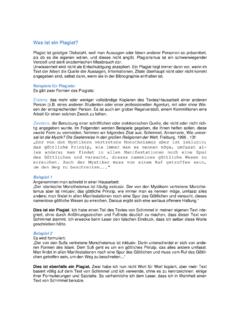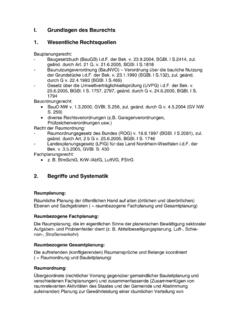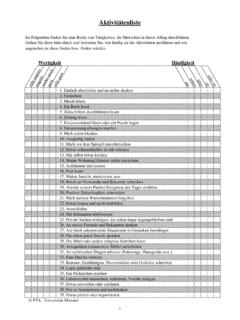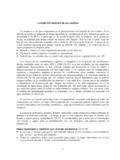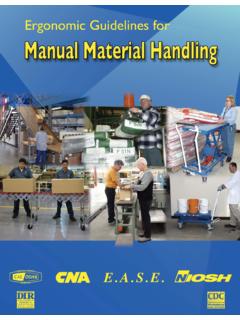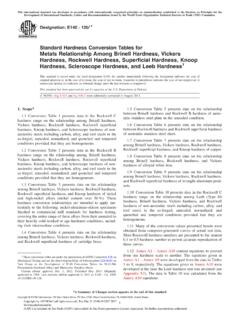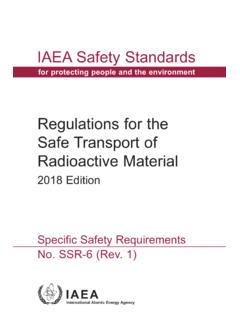Transcription of KOH Material Safety Data Sheet Chemical ... - uni-muenster.de
1 P. 1 0 3 1He a lt hFireRe a c t iv it yP e rs o n a lP ro t e c t io n302 JMaterial Safety data SheetPotassium hydroxide MSDSS ection 1: Chemical Product and Company IdentificationProduct Name: potassium hydroxideCatalog Codes: SLP4096, SLP3085, SLP4900, SLP2071 CAS#: 1310-58-3 RTECS: TT2100000 TSCA: TSCA 8(b) inventory: potassium hydroxideCI#: Not : Chemical Name: potassium HydroxideChemical Formula: KOHC ontact , Smith , Texas 77396US Sales: 1-800-901-7247 International Sales: 1-281-441-4400 Order Online: (24HR Emergency Telephone), call:1-800-424-9300 International CHEMTREC, call: 1-703-527-3887 For non-emergency assistance, call: 1-281-441-4400 Section 2: Composition and Information on IngredientsComposition:NameCAS #% by WeightPotassium hydroxide1310-58-3100 Toxicological data on Ingredients: potassium hydroxide : ORAL (LD50): Acute: 273 mg/kg [Rat].Section 3: Hazards IdentificationPotential Acute Health Effects:Very hazardous in case of skin contact (corrosive, irritant), of eye contact (irritant, corrosive), of ingestion, of amount of tissue damage depends on length of contact.
2 Eye contact can result in corneal damage or blindness. Skincontact can produce inflammation and blistering. Inhalation of dust will produce irritation to gastro-intestinal or respiratorytract, characterized by burning, sneezing and coughing. Severe over-exposure can produce lung damage, choking,unconsciousness or death. Inflammation of the eye is characterized by redness, watering, and itching. Skin inflammation ischaracterized by itching, scaling, reddening, or, occasionally, Chronic Health Effects:CARCINOGENIC EFFECTS: Not available. MUTAGENIC EFFECTS: Mutagenic for mammalian somatic EFFECTS: Not available. DEVELOPMENTAL TOXICITY: Not available. The substance may be toxic toupper respiratory tract, skin, eyes. Repeated or prolonged exposure to the substance can produce target organs exposure of the eyes to a low level of dust can produce eye irritation. Repeated skin exposure can produce localskin destruction, or dermatitis. Repeated inhalation of dust can produce varying degree of respiratory irritation or lung 2 Section 4: First Aid MeasuresEye Contact:Check for and remove any contact lenses.
3 In case of contact, immediately flush eyes with plenty of water for at least 15minutes. Cold water may be used. Get medical attention Contact:In case of contact, immediately flush skin with plenty of water for at least 15 minutes while removing contaminated clothingand shoes. Cover the irritated skin with an emollient. Cold water may be clothing before reuse. Thoroughly cleanshoes before reuse. Get medical attention Skin Contact:Wash with a disinfectant soap and cover the contaminated skin with an anti-bacterial cream. Seek immediate :If inhaled, remove to fresh air. If not breathing, give artificial respiration. If breathing is difficult, give oxygen. Get medicalattention Inhalation:Evacuate the victim to a safe area as soon as possible. Loosen tight clothing such as a collar, tie, belt or waistband. Ifbreathing is difficult, administer oxygen. If the victim is not breathing, perform mouth-to-mouth resuscitation. WARNING: It maybe hazardous to the person providing aid to give mouth-to-mouth resuscitation when the inhaled Material is toxic, infectious orcorrosive.
4 Seek immediate medical :Do NOT induce vomiting unless directed to do so by medical personnel. Never give anything by mouth to an unconsciousperson. If large quantities of this Material are swallowed, call a physician immediately. Loosen tight clothing such as a collar,tie, belt or Ingestion: Not 5: Fire and Explosion DataFlammability of the Product: Temperature: Not Points: Not Limits: Not of Combustion: Not Hazards in Presence of Various Substances: metals, acidsExplosion Hazards in Presence of Various Substances:Risks of explosion of the product in presence of mechanical impact: Not available. Risks of explosion of the product inpresence of static discharge: Not Fighting Media and Instructions: Not Remarks on Fire Hazards:Violent reaction or ignition under appropriate conditions with acids, alcohols, p-bis(1,3-dibromoethyl) benzene,cyclopentadiene, germanium, hyponitrous acid, maleic anhydride, nitroalkanes, 2-nitrophenol, potassium peroxodisulfate,sugars, 2,2,3,3-tetrafluoropropanol, thorium dicarbide.
5 Molten ortho -nitrophenol reacts violently with potassium potassium hydroxide and tetrachloroethane are heated, a spontaneously flammable gas, chloroacetylene, is phosphorus is boiled in a solution of potassium hydroxide , phosphine gas is evolved which is spontaneously ,2-Dichloroethylene and potassium hydroxide reaction produces chloroacetylene which is spontaneously flammable in Persulfate and a little potassium hydroxide and water will ignite. When wet, attacks metals such as aluminum, tin,lead, and zinc, producing flammable hydrogen Remarks on Explosion Hazards:p. 3 Potentially explosive reaction with bromoform + crown ethers, chlorine dioxide, nitrobenzene, nitromethane, nitrogentrichloride, peroxidized tetrahydrofuran, 2,4,6-trinitrotoluene. Reaction with ammonium hexachloroplatiate(2-) + heat formsheat sensitive explosive product. potassium hydroxide will cause explosive decomposition of maleic anhydride. Detonation willoccur when potassiuim hydroxide is mixed with n-methyl-nitroso urea and methylene chloride.
6 Nitrogen trichloride explodes oncontact with potassium 6: Accidental Release MeasuresSmall Spill:Use appropriate tools to put the spilled solid in a convenient waste disposal container. If necessary: Neutralize the residue witha dilute solution of acetic Spill:Corrosive solid. Stop leak if without risk. Do not get water inside container. Do not touch spilled Material . Use water sprayto reduce vapors. Prevent entry into sewers, basements or confined areas; dike if needed. Call for assistance on the residue with a dilute solution of acetic acid. Be careful that the product is not present at a concentration levelabove TLV. Check TLV on the msds and with local 7: Handling and StoragePrecautions:Keep container dry. Do not ingest. Do not breathe dust. Never add water to this product. In case of insufficient ventilation,wear suitable respiratory equipment. If ingested, seek medical advice immediately and show the container or the label. Avoidcontact with skin and eyes. Keep away from incompatibles such as organic materials, metals, acids, : Keep container tightly closed.
7 Keep container in a cool, well-ventilated area. Do not store above 23 C ( F).Section 8: Exposure Controls/Personal ProtectionEngineering Controls:Use process enclosures, local exhaust ventilation, or other engineering controls to keep airborne levels below recommendedexposure limits. If user operations generate dust, fume or mist, use ventilation to keep exposure to airborne contaminantsbelow the exposure Protection:Splash goggles. Synthetic apron. Vapor and dust respirator. Be sure to use an approved/certified respirator or Protection in Case of a Large Spill:Splash goggles. Full suit. Vapor and dust respirator. Boots. Gloves. A self contained breathing apparatus should be used toavoid inhalation of the product. Suggested protective clothing might not be sufficient; consult a specialist BEFORE handlingthis Limits:CEIL: 2 (mg/m3) from OSHA (PEL) [United States] CEIL: 2 (mg/m3) from ACGIH (TLV) [United States] Consult localauthorities for acceptable exposure 9: Physical and Chemical PropertiesPhysical state and appearance: Solid.
8 (Solid pellets.)Odor: : Not Weight: g/molep. 4 Color: (1% soln/water): 13 [Basic.]Boiling Point: Decomposition temperature: 1384 C ( F)Melting Point: 380 C (716 F)Critical Temperature: Not Gravity: (Water = 1)Vapor Pressure: Not Density: Not : Not Threshold: Not Dist. Coeff.: Not (in Water): Not Properties: See solubility in :Easily soluble in cold water, hot water. Insoluble in diethyl 10: Stability and Reactivity DataStability: The product is Temperature: Not of Instability: Incompatible materials, dust generation, exposure to moist air or with various substances:Highly reactive with acids. Reactive with organic materials, metals, :Extremely corrosive in presence of aluminum, brass, and zinc. Slightly corrosive in presence of copper, of stainless steel(304).Non-corrosive in presence of stainless steel(316).Special Remarks on Reactivity:Hygroscopic (absorbs moisture from air). When dissolved in water or alcohol or when the solution is treated with acid, muchheat is generated.
9 Reacts violently with acids, halogens, halogenated hydrocarbons, maleic anhydride, organic anhydrides,isocyanates, alkylene oxides, epichlorhydrin, aldehydes, alcohols, gylcols, phenols, cresols, caprolactum solution. Alsoincompatible with nitro compounds (nitrobenzene, nitromethane, nitrogen trichloride), organic materials, acid anhydrides, acidchlorides, magnesium, peroxidized tetrahydrofuran, chlorine dioxide, maleic dicarbide, sugars. When wet attacks metals suchas aluminum, tin, lead, and Remarks on Corrosivity:When wet, attacks metals such as aluminum, tin, lead, and zinc, producing flammable hydrogen gas. Severe corrosive effecton brass and : Will not 11: Toxicological InformationRoutes of Entry: Absorbed through skin. Inhalation. to Animals: Acute oral toxicity (LD50): 273 mg/kg [Rat].Chronic Effects on Humans:p. 5 MUTAGENIC EFFECTS: Mutagenic for mammalian somatic cells. May cause damage to the following organs: upperrespiratory tract, skin, Toxic Effects on Humans:Extremely hazardous in case of inhalation (lung corrosive).
10 Very hazardous in case of skin contact (corrosive, irritant), of eyecontact (corrosive), of ingestion, .Special Remarks on Toxicity to Animals: Not Remarks on Chronic Effects on Humans: May affect genetic Material based on animal Remarks on other Toxic Effects on Humans:Acute Potential Health Effects: Skin: Causes severe skin irritation and burns. Eyes: Causes severe eye irritation andburns. May cause irreversible eye injury. Inhalation: Causes severe irritation and burns of the respiratory tract and mucousmembranes. Irritation may lead to Chemical pneumonitis Ingestion: Harmful if swallowed. May cause severe and permanentdamage to the digestive tract. Causes severe irritation and burns of the gastrointestinal (digestive) tract with abdominal pain,vomiting and possible death. May cause perforation of the digestive tract. Chronic Potential Health Effects: Chronic contactwith dilute solutions of potassium hydroxide can cause dermatitis. Inhalation can produce chronic productive cough, andshortness of 12: Ecological InformationEcotoxicity: Ecotoxicity in water (LC50): 80 mg/l 24 hours [Mosquito Fish].


